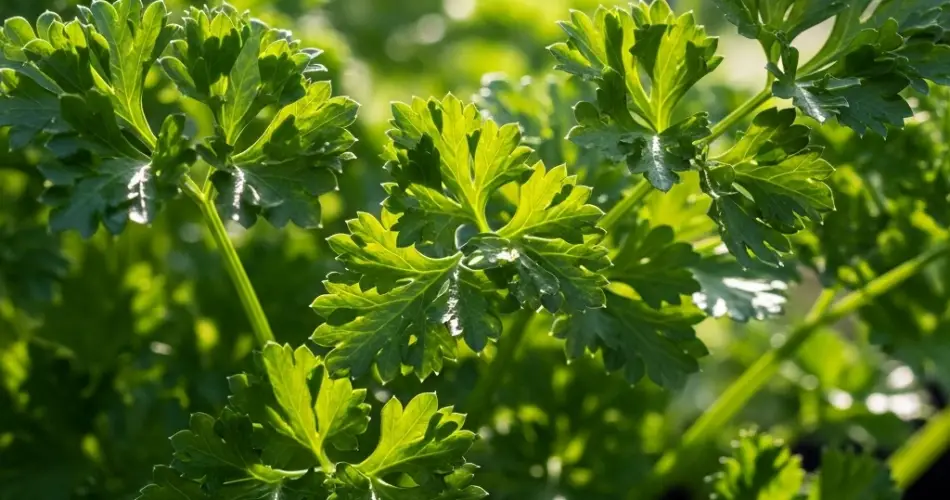Parsley is a versatile, nutrient-rich herb that adds fresh flavor and color to countless dishes. Whether used as a garnish, in salads, or cooked into meals, having a thriving parsley patch at home is a gardener’s delight. While parsley is generally slow to germinate and grow, following the right steps can significantly boost your yield and speed up your harvest.
Here’s a comprehensive guide on how to maximize parsley production, starting from seed all the way to a bountiful and beautiful harvest—faster than ever before.
Why Grow Parsley from Seed?
Growing parsley from seed is cost-effective and gives you a wide range of varieties to choose from, including curly leaf, flat leaf (Italian), and specialty types. Though parsley seeds can take two to three weeks to germinate naturally, the right preparation and care can speed this process up considerably, leading to faster growth and bigger yields.
Choosing Quality Seeds and Preparing Them for Planting
Begin with fresh, high-quality parsley seeds purchased from a reputable supplier. Older seeds lose viability and will take longer to sprout or fail to germinate altogether.
To jumpstart germination:
-
Soak the Seeds: Parsley seeds have a hard outer shell, so soaking them in warm water for 24 hours before planting helps soften the coat and speed up sprouting.
-
Cold Stratification (Optional): Some gardeners find that placing soaked seeds in the refrigerator for 2-3 weeks mimics winter conditions, further improving germination rates, especially in cooler climates.
Preparing the Soil for Maximum Growth
Parsley thrives in rich, well-draining soil with plenty of organic matter. Before planting:
-
Loosen the soil to a depth of at least 8 inches to promote deep root growth.
-
Amend the soil with compost or aged manure to provide essential nutrients.
-
Aim for a soil pH between 6.0 and 7.0 for optimal nutrient uptake.
Best Planting Practices for Parsley
-
Start Indoors or Direct Sow: Parsley seeds can be started indoors 6-8 weeks before the last frost or sown directly outdoors once the soil temperature is consistently above 50°F (10°C).
-
Sow Thinly: Scatter seeds thinly on the soil surface and cover lightly with about ¼ inch of soil or fine compost.
-
Keep Moist: Water gently but thoroughly to keep the soil moist without becoming soggy.
-
Provide Warmth: Parsley seeds germinate faster at soil temperatures around 70°F (21°C). Using a seedling heat mat can speed germination by a week or more.
Speeding Up Germination
Parsley can be slow to sprout, sometimes taking up to 3 weeks. To accelerate this:
-
Use the pre-soaking method mentioned above.
-
Maintain consistent moisture without waterlogging.
-
Cover the seed tray or bed with a clear plastic dome or plastic wrap to retain humidity until seeds sprout.
-
Ensure the seeds receive indirect, warm light rather than direct sunlight during germination.
Transplanting and Spacing for Larger Yields
Once seedlings have at least two sets of true leaves, thin or transplant them to allow 6-8 inches of space between plants. Proper spacing prevents overcrowding, reduces disease risk, and allows each plant to develop robust root systems and full foliage.
Providing Optimal Growing Conditions
-
Light: Parsley thrives in full sun but tolerates light shade. Aim for 6-8 hours of sunlight daily.
-
Watering: Keep soil consistently moist but avoid waterlogging. Mulching around plants helps retain moisture and keeps weeds down.
-
Feeding: Fertilize every 4-6 weeks with a balanced, water-soluble fertilizer or apply a slow-release organic fertilizer at planting to promote lush leaf growth.
Pruning and Harvesting for Maximum Yield
Parsley responds well to regular harvesting, which encourages new growth and prevents the plant from flowering prematurely.
-
Begin harvesting when plants are at least 6 inches tall.
-
Cut outer leaves first, close to the base, leaving inner leaves to continue growing.
-
Avoid cutting more than one-third of the plant at once to maintain health.
-
Frequent harvesting every 1-2 weeks can extend the growing season and maximize total yield.
Preventing Bolting and Disease
Parsley is prone to bolting (going to seed) in hot weather, which reduces leaf production. To delay bolting:
-
Keep plants well-watered during dry spells.
-
Provide partial shade in the afternoon during hot summers.
-
Harvest regularly to reduce plant stress.
Prevent fungal diseases by ensuring good air circulation, avoiding overhead watering, and removing any yellowing or diseased leaves promptly.
Extending Your Parsley Harvest
Parsley is a biennial plant, meaning it can live for two growing seasons if cared for properly. In mild climates, you can overwinter parsley outdoors or bring pots indoors for continued growth.
Alternatively, succession planting every few weeks ensures a steady supply of fresh parsley throughout the growing season.
Summary: Key Steps to Stunning Parsley Yields
-
Start with fresh seeds and soak them before planting.
-
Use rich, well-draining soil amended with organic matter.
-
Maintain consistent moisture and warmth to speed germination.
-
Thin or transplant seedlings to allow ample space.
-
Provide full sun or partial shade and regular feeding.
-
Harvest regularly to encourage new growth.
-
Manage heat stress and diseases to prolong productivity.
By following these best practices, you can transform parsley from a slow starter to a prolific, lush herb that delivers a stunning harvest faster than you might expect.



